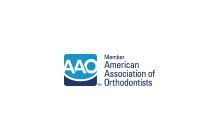5 Common Bite Problems
 |
| Chorak Orthodontics |
When a person's teeth or jaws do not fit together properly, orthodontic treatment may be necessary to correct the problem. If left untreated, these orthodontic problems can cause speech difficulty, premature wear of the teeth and protective enamel, and even increase the chance of injury to the teeth and jaw joints.
5 Common Orthodontic Problems
1. Crowding - Crowding occurs when teeth have insufficient room to erupt from the gums. This can be a result of big teeth or inadequate space in the jaw or both. This may result in teeth that overlap, are rotated, or take on a crooked/staggered appearance. Crowding is the most common reason for braces. Not only is crowding unattractive, but it has also been linked to periodontal problems and dental decay because it is harder to clean overlapping teeth's surfaces.
Possible consequences if crowding is not corrected: Hard to clean; possible cavities, especially in between the teeth; gum disease.
2. Spacing - Spacing problems may be caused by missing teeth, or they may only be a cosmetic or aesthetic issue. Spacing is another popular reason for braces. The opposite of crowding, spacing is most commonly caused by excessive jaw room for the size of the erupting teeth.
Possible consequences if spacing is not corrected: Food gets stuck in open areas. Possible cavities, gum disease.
3. Crossbite - A crossbite occurs when the upper teeth fit inside of lower teeth. This orthodontic problem can be caused by misalignment of teeth or a misalignment of the bone and can affect a single tooth or groups of teeth. Your jaw may shift to one side if not corrected and wears down on your tooth enamel.
Possible consequences if a crossbite is not corrected: The jaw shifts to one side; lopsided jaw growth; wearing down of outer layer of the tooth called “enamel”.
4. Underbite - An underbite happens when the lower jaw sits in front of the upper jaw. An underbite impacts tooth wear and adds a stress on your jaw joints. Through orthodontic treatment, these bites can be corrected and help keep you healthy, beyond an aesthetically pleasing smile.
Possible consequences if an underbite is not corrected: Face has “bulldog” appearance; tooth wear; stress on jaw joints.
5. Protrusion – A protrusion occurs when the front teeth stick out (“buck” teeth). Teeth may appear protrusive because the upper jaw is too far forward, the lower jaw is too far back, the teeth grew in at an angle, or a combination of these conditions. Sometimes people who have protrusive front teeth also have a deep bite.
Possible consequences if a protrusion is not corrected: Upper teeth are prone to accidental breaking; hard to comfortably close the mouth and lips, leading to dried out oral tissues followed by tooth decay. Speech problems.




